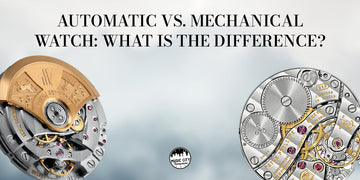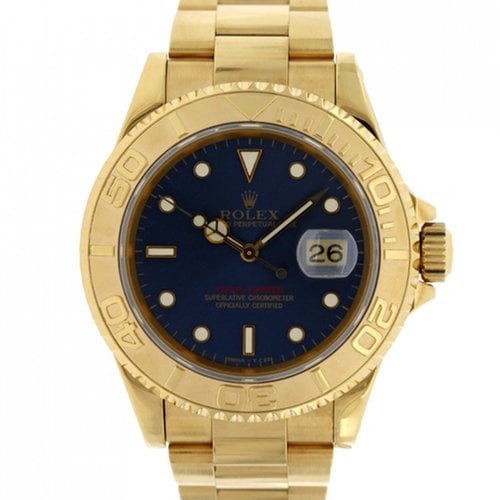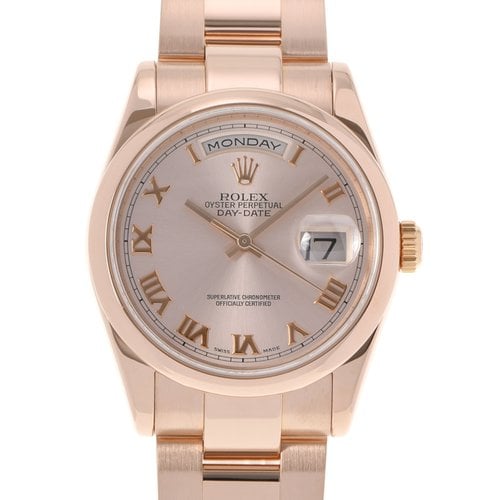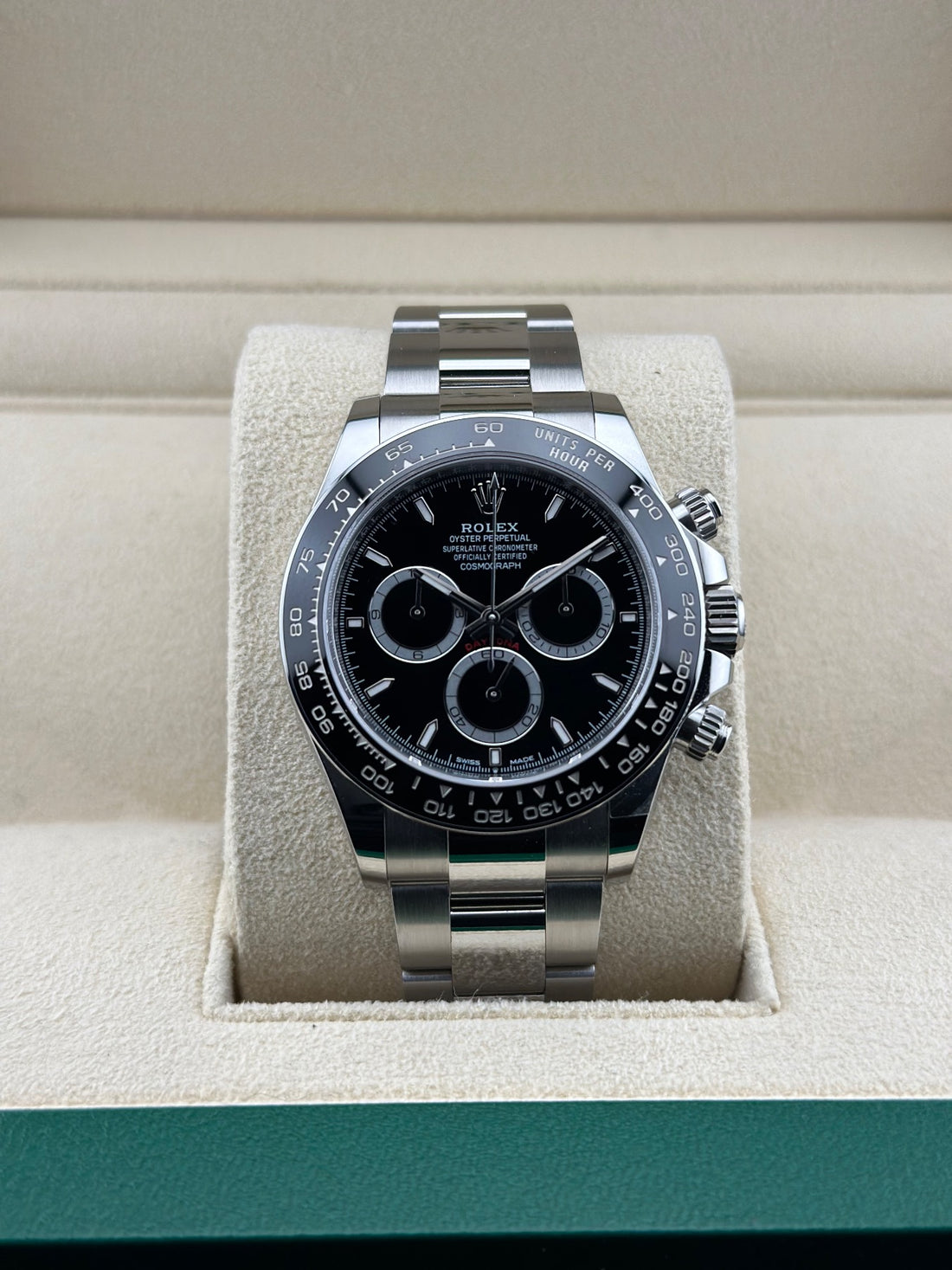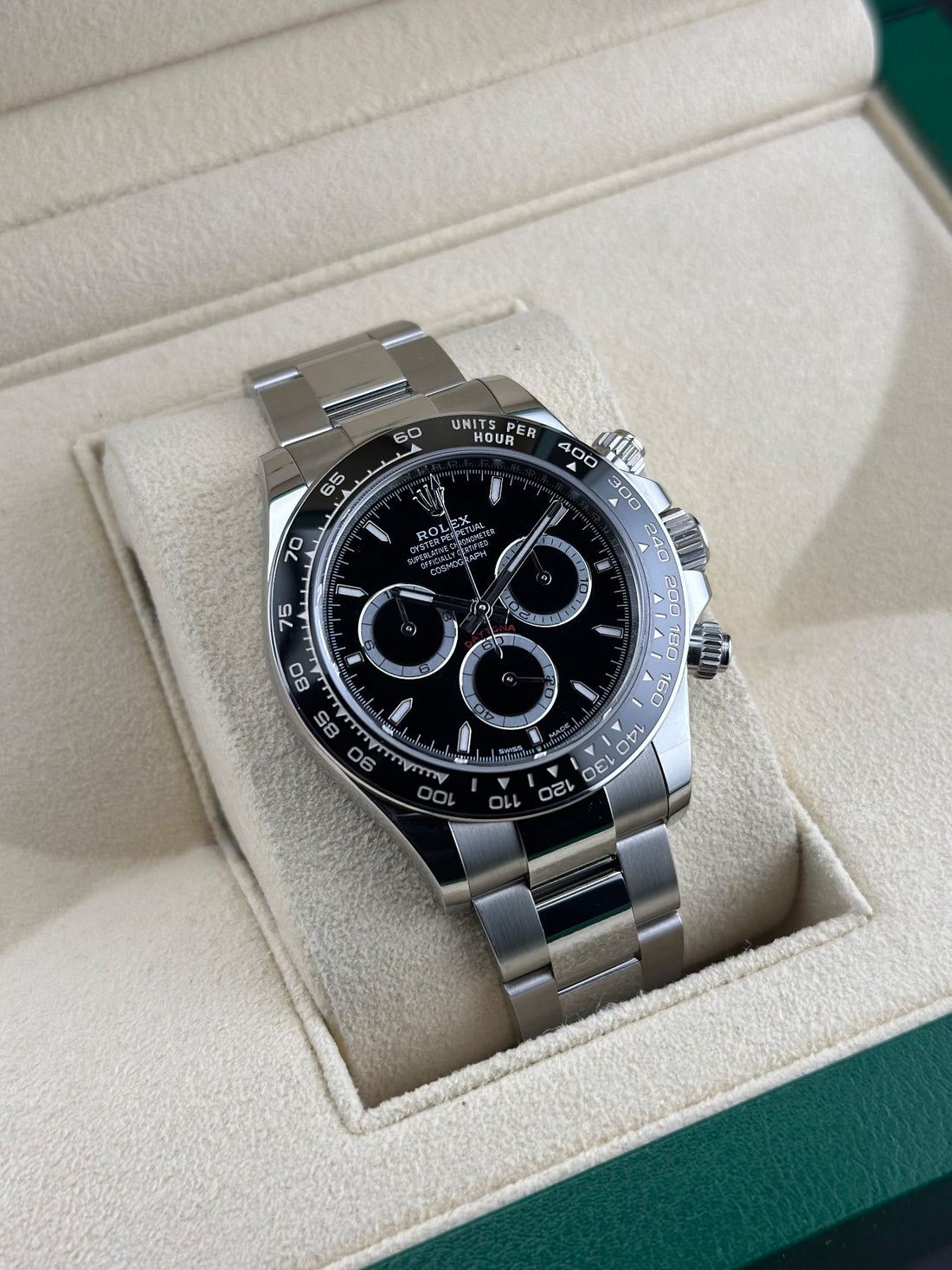When shopping for a luxury timepiece, movement types are something you would typically encounter. However, varied movement types could be confusing at first glance. The two terms “automatic” and “mechanical” are often confused and misused, leading most watch enthusiasts and collectors to believe they represent two completely different categories. However, the reality that relates to both movements is more nuanced, contrary to the belief of most people.
Both automatic and mechanical watches pioneer traditional watchmaking and represent top-end craftsmanship that relies heavily on intricate mechanical components. Having a sound knowledge of the movement types is pivotal for making an informed purchase decision, whether you are out there indulging in your first luxury watch experience or expanding on an existing collection.
At Music City Timepieces, we provide expert guidance to help you choose the perfect Swiss timepiece for your lifestyle and preferences. Having gathered years of experience in the luxury watch industry, we help you select the ideal Swiss timepiece that adequately fits your lifestyle and preferences.
Mechanical Watches: What are These?
Mechanical watches have stood the test of time, staying at the forefront, pioneering a century-old watchmaking innovation, embracing high-end craftsmanship and engineering excellence for years.
Powered entirely by a coiled metal spring, also termed the mainspring, this very complex system stores energy that is gradually released via a complex network of gears, springs, and other components that bring the required precision to let your timepiece operate flawlessly for accurate timekeeping.
The beauty of mechanical timepieces lies in the complex yet simplistic working of hundreds of tiny components linked intricately and working in close quarters. Unlike quartz watches, which rely on batteries, mechanical movements excel in showcasing aesthetic artistry and top-end engineering, capturing collectors for generations.
Essential Components of Mechanical Movements
-
Mainspring: At the heart of any mechanical watch is the mainspring. This is the coiled spring that stores energy and gradually releases it to power the other components, thus ensuring smooth and seamless operation.
-
Gear Train: A gear train comprises a sophisticated train of interconnected gears that transfer required energy from the mainspring to the other components, thus ensuring a seamless operation.
-
Escapement: Escapement is a crucial mechanism that controls the flow of energy emanating from the gear train to the balance wheel. Escapement ensures timekeeping accuracy.
-
Balance Wheel: Symbolises a weighted wheel that would oscillate at precise periods or regular intervals, thus serving as your watch’s timekeeping regulator.
The Two Types of Mechanical Watches
Here's where many people get confused: mechanical watches encompass two distinct categories based on how the mainspring receives its energy.
Automatic Watches: Self-Winding Convenience
Automatic watches bring in the sophistication and convenience of self-winding. Harnessing the natural motion of the wrist is crucial to winding the mainspring. The creative ability of automatic watches is a class apart, with the ingenious system maintaining power as long as you wear the watch, eliminating the need for daily manual winding.
Here, the automatic mechanism incorporates two additional components beyond the other mechanical parts, and these include:
-
Rotor: A weighted semicircular disc that rotates with wrist movement, capturing kinetic energy from your daily activities.
-
Reverser Mechanism: A sophisticated gear system that converts the rotor's bidirectional motion into a unidirectional winding force.
Benefits Associated with Automatic Movements
Automatic watches unfurl unparalleled confidence for daily wear. The self-winding mechanism ensures your timepiece remains powered during regular use. Thus making it the most popular choice for individuals with active lifestyles, and those who desire a hassle-free operation.
These movements overwhelmingly dominate the luxury watch market of today. With popular brands like Omega, Patek Philippe, or Rolex, the brands have focused entirely on revamping their watchmaking capabilities via perfecting their automatic technology for decades. The factors that yield great dividends are remarkably consistent for seasoned collectors.
Music City Timepieces carries an extensive selection of automatic Swiss watches, and our customer reviews consistently highlight the convenience and reliability of these self-winding movements.
Drawbacks
The use of additional components required for automatic winding could make these watches a slightly thicker version of their manual counterpart. Subtle rotor movement sounds are also noticed, which, however, could rarely cause any concerns.
Manual Winding Watches: Traditional Craftsmanship
Owing to the traditional craftsmanship, manual winding requires you to wind the crown manually regularly. The period for winding manually could range between 24 and 48 hours, depending entirely on the movement’s power reserve. Though a traditional approach, it connects you to your watch’s power source directly.
Winding the crown clockwise till you feel the resistance, indicating the mainspring has reached its limit. Here, this very practice, or rather a ritual, would let you establish an intimate connection with the timepiece. A more transparent approach helps you establish control over your watch, fostering a sense of responsiveness from the wearer that lets enthusiasts and collectors cherish their piece of traditional craftsmanship.
Advantages of Having Manual Movements
Manual watches have slimmer, sophisticated profiles since they do not require rotor or reverser mechanisms. Possessing a much streamlined design, their suitability and style appeal to a range of collectors and enthusiasts who appreciate both form and function. These elegant yet understated timepieces bring in a classic vibe with a completely different aura, complementing traditional craftsmanship with state-of-the-art designs.
The art of daily winding fosters a reverence for the makers, with collectors in awe of their classic yet aesthetic appeal and allure. Mechanical craftsmanship allows collectors to enjoy a tactile connection with their watches, viewing them as a meditative daily practice that garnishes their wrists with pride, history, and heritage, rather than a chore.
Manual movements cost-effectively less than their automatic counterparts and are carved out of more straightforward yet enticing construction practices. Making an accessible entry point, surmounting luxury traditional watchmaking.
Manual Watches and their Considerations
The primary challenge was around the daily winding. With manual watches, if forgotten, the watch would automatically stop, requiring rewinding and time resetting. Additionally, it is crucial to ensure that overwinding does not damage the mainspring; however, modern movements typically include protection mechanisms.
Comparing Movement Types
|
Feature |
Automatic |
Manual Winding |
|
Winding Method |
Self-winding via wrist motion |
Daily manual crown winding |
|
Case Thickness |
Typically thicker |
Generally thinner profile |
|
Maintenance |
Minimal user involvement |
Daily winding required |
|
Price Range |
Usually higher cost |
Often more affordable |
|
User Experience |
Convenient daily wear |
Intimate connection with a timepiece |
The Right Movement for You
Pick Your Lifestyle
Professionals with active daily lifestyles who wear their watches regularly find the convenience of automatic movement particularly beneficial. Automatic movements and their self-winding ensure a consistent operability without any interruptions if not routinely attended.
However, individuals with varying schedules and those who wear multiple watches, as they cannot dedicate a single watch to consistent use, might prefer manual movements. An occasional wearer and an occasional wearing of the watch would not create the wrist motion required for automatic winding.
Choosing based on your lifestyle and areas of operation allows you to make informed choices for better applicability.
Budget Considerations
Consider what your budget allows. With manual movements typically offering better value for money, while still allowing access to the best of those Swiss brands at accessible price points, operability remains a huge selection criterion for making informed choices. It is essential to understand that automatic movements command premium price tags due to their complex self-winding mechanisms.
At Music City Timepieces, we help customers navigate these price considerations, ensuring you find exceptional value regardless of movement preference. Our nearly 200 customer reviews reflect our commitment to matching clients with timepieces that suit both their preferences and budgets.
Prefer What’s Aesthetically Pleasing
Manual watches are a point of attraction for purists who are inspired by and appreciate traditional watchmaking practices. Offering more sophisticated methods and slimmer case profiles, automatic watches suit those who prioritize convenience and enjoy modern, contemporary innovation.
Prestigious Brands Offering Both Movement Types

Swiss Prestige and Watchmaking Excellence
Rolex
Garlanded with the pride and prestige of Swiss excellence and craftsmanship brilliance, embellished with a finesse for the ages, Rolex has carried a reputation built on precision and durability. Epitomizing the very nuances of luxury horology, pioneering the art of fine watchmaking, and having ruled the world of Swiss watchmaking for ages, Rolex brings in select collections that include manual wind options for traditionalists and quartz models at the pinnacle with exceptional accuracy.
Omega
A comprehensive range of timepieces, amassing some of the top pieces in the ever-expansive horological landscape, Omega features automatic, manual, and quartz movements, thus catering to a variety of tastes, lifestyles, and purposes.
Their selected and very diverse collections showcase premium craftsmanship, precision, and timeless design, incorporating some of the finest design elements backed with one-of-a-kind engineering techniques embracing watchmaking innovation of the highest order.
Patek Philippe
Renowned for their mechanical and quartz movement types, Patek Philippe pioneers Swiss watchmaking. At the pinnacle of Swiss artistry, finesse, and elegance, Patek Philippe combines timeless designs with enduring beauty and unparalleled craftsmanship, featuring innovative technology that creates masterpieces and heirlooms.
Audemars Piguet
Renowned for its iconic and timeless designs, Audemars Piguet offers both automatic and manual watch variants, crafted with precision and elegance. Known not only for their superior craftsmanship but also for their exceptional investment potential, these luxury timepieces are highly sought after by collectors and enthusiasts worldwide.
At the Pinnacle of Italian Innovation
Panerai
Known for their heritage-inspired designs, Panerai seamlessly blends iconic craftsmanship with watchmaking sophistication and Italian finesse. Imbibing timeless style and backed by cutting-edge craftsmanship, these feature both automatic and mechanical movements.
Every piece from their much-coveted selections depicts connections forged with maritime traditions that deepen with time, offering robust functionality and unmistakable Italian elegance. Music City Timepieces specializes in these prestigious Swiss and Italian brands, offering authenticated timepieces with comprehensive service support. Our expertise, validated by extensive customer reviews, ensures you receive genuine products backed by manufacturer warranties.
Time to Make Your Decisions
If you choose between automatic and mechanical movements, it ultimately depends on your personal preferences, with lifestyle requirements and aesthetic tastes determining your purchase decisions. With both automatic and mechanical movement providing aesthetic choices, your selections redefine horology, typically suiting your personal preferences, ultimately setting gold standards.
With the intricately operated automatic movements providing convenient and practical on-the-go choices for daily wear, manual movements offer traditional experiences that set the bar right for luxury watchmaking, ultimately connecting with your timepiece. Neither choice compromises on durability, elegance, or the accuracy and prestige of watchmaking.
Consider visiting Music City Timepieces to experience these movement types firsthand. Our knowledgeable staff, supported by nearly 200 positive customer reviews, can guide you through the selection process, ensuring you choose the perfect Swiss timepiece for your collection.

